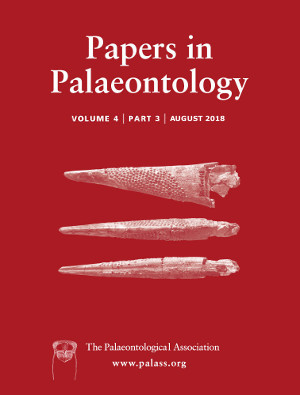Reg. Charity No. 1168330

The first known basicranium belonging to Carcharopsis wortheni is described, based on examination of endoskeletal morphology obtained from three‐dimensional reconstructions produced by high‐resolution CT scanning of a previously undescribed specimen. C. wortheni has been described from the late Mississippian (middle Chesterian) Fayetteville Shale based on jaws and teeth, but never before from its cranial anatomy. This specimen has jaw fragments and teeth, associated with the basicranium. The braincase has rounded, low extensions of the occipital region, forming a short lateral occipital shelf, the hypotic lamina is separated from the otic capsule by a continuous metotic fissure, and the postorbital flange is low. Cartilage surrounding the notochordal canal is mineralized, and broken into at least two pieces. Paired, enclosed dorsal aortae are present, which branch into orbital arteries anteriorly, with a midline pit present between the posterior openings for the aortae. Portions of the semicircular canals are visible, with associated ampullae. An improved description of C. wortheni teeth is presented based on CT scanning, including details of tooth vascularization. Carcharopsis is the first Palaeozoic chondrichthyan in which an anaulacorhize‐like vascular network has been recognized. New anatomical data presented here add considerably to our understanding of the phylogenetic relationships of Carcharopsis, and also contribute to the described diversity of Fayetteville Shale vertebrates.